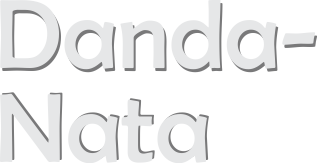
Unfolding the panorama of Orissa, one can find refined forms of arts, crafts, music and dance. With the unique dance forms of Odissi and Chhau that received international applauds, these dances have highly evolved as a manifestation of the most evocative and celebrated performances, not only from the professional classical exponents but also from the various folk and tribal groups in Orissa. However, there are a number of folk dances and traditions that lend it a captive essence. One such folk dance is the Danda Nata. Also known as the ‘Danda Jatra’, it is considered as one of the most ancient form of historic arts of the state of Orissa. Danda Nata was formed and developed as an institution of dance, music and dramatics and corresponds with ritualistic services. The dance is associated with universal brotherhood and is blended with religions and social reformation. The theatrical form of this dance brings out a feeling of co–existence between political principles and a set of opinions as well as among the followers of different philosophical doctrines.
There are two main meanings of the word ‘danda’. One of them includes club, rod, pole, stick, staff and sceptre whereas the other includes punishment or chastisement. However, there is a folktale according to the Hindu mythology for the origination of the word ‘danda’. The word ‘danda’ is said to have originated from the Tandava Nrutya of Lord Shiva. Once, Shiva was teaching the Nrutya to his son Lord Ganesha. During the dance, he vigorously kicked the stage that made the sound ‘DAN’. Concurrently, the brass tinkler from his chain was broken and it fell on the Mardala, a percussion instrument. This emanated a subsequent note of sound as ‘DA’. Together, these words evolved as ‘Danda’ to get the blessings of Lord Shiva and its performances were associated with vigour and known as ‘Udanda’.
Danda Nata, an Oriya tribal way of welcoming the New Year beginning in the month of Vaishakh, is a festival of ritualised performances. Its origin can be traced back during the 9th–10th centuries in the tribal belts. However, in course of time, it took shape as a performing art and embraced the non–tribals, even Brahmins into its fold. With both the elements of Desi and Margi Styles, the theme of the dance is taken from the Sanskrit literature. There are participants from many tribal groups like the Bolangir and Boudh–Phulbani tribal groups from the districts of Sambalpur, groups from the Gadajata areas of Ganjam, Dhenkanal and Puri artisans and the Nayagarh and Odagoan from the Puri district. In modern days, a few playwrights adopted to its style from the verbal and non–verbal symbolic enactments in the Danda Nata performances.
The dance begins on the Chaitra Purnima and ends on the Pana Sankranti (Maha Vishuva Sankranti) day. The months of Chaitra and Vaishakh are considered to be most auspicious to worship Lord Shiva. According to many religious thesis, the invoking of Lord Shiva during this period of the year indicate the Earth to be blessed with good harvest, increase of wealth and all round improvement of the families and communities. The performances of Lord Shiva begin from the sixth day of the solar month of Meena (March–April). From the sixth day, preliminary preparations are made for four days which include people making vows while some receiving hukums through trance. The Jhamu Jatra takes place for eight days and the rest thirteen days are meant for Danda Nata. Participants who invoke the blessings of Lord Shiva are under a vow. These vowers are also called Bhoktas. The Bhoktas may be the ones to be blessed with a child, to fulfil certain ambition, to get rid of sickness, seeking happiness in life, good harvest or even peace and happiness for all the fellowmen. There are about 13 Bhoktas and the festival also lasts for 13 days. With their leader Pata–Bhokta, all the Bhoktas lead a pious life for 21 days.
With their band of musicians and group, the Bhoktas go around the village in a procession. However, a specified declaration is not made as to where will the Danda will be performed. In order to indicate an invitation to the party, some villagers (male or female) see the procession and pour water, clean up the front of their houses with cow dung and water and put up floor designs with coloured powders and keep a jugful of water. Having received such an invitation, the group lights up an oil lamp and keep it on the verandah of the host and return to their camp. The next day, the group comes to the spot mid–day and performs the Bhumi (earth) Danda or Dhuli (dust) Danda. The dance is comprised of three phases namely the Bhumi or Dhuli Danda (acrobatic and gymnastic steps), Pani Danda (performance of aquatic feats) and the Danda Suanga (dance, music and drama is performed during the night).
The chief musical instrument of Danda Nata is the dhol which is a double–sided drum and the mahuri, a wind–like instrument like shehnai. The other instruments are used in sequence of the God’s characters. These include the ghanta (a metal disc), kahali (clarion), sankha (conch–shell) and the brass alloy clappers. In addition to these, few small instruments are also used such as the ghungroo, ghagudi that are small and big tinklers, dasakathi, ram tali, khanjani and ghoodukior dhuduki. Veena (a stringed instrument) is played as per the requirement. The musicians sit nearer to the passage of artists at a side of an open arena. While playing the music, they turn to the Screen Room (Vesha Ghara) to a lead character to the arena. The drummers illustrate their own skill and stamina by playing the drums with regular dances and acrobatics in between the sequences.
G Kowledge of | 0 Comments >>
0 Comments
Leave Comment
Your email address will not be published. Required fields are marked.